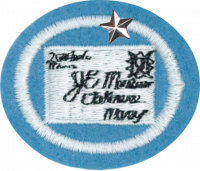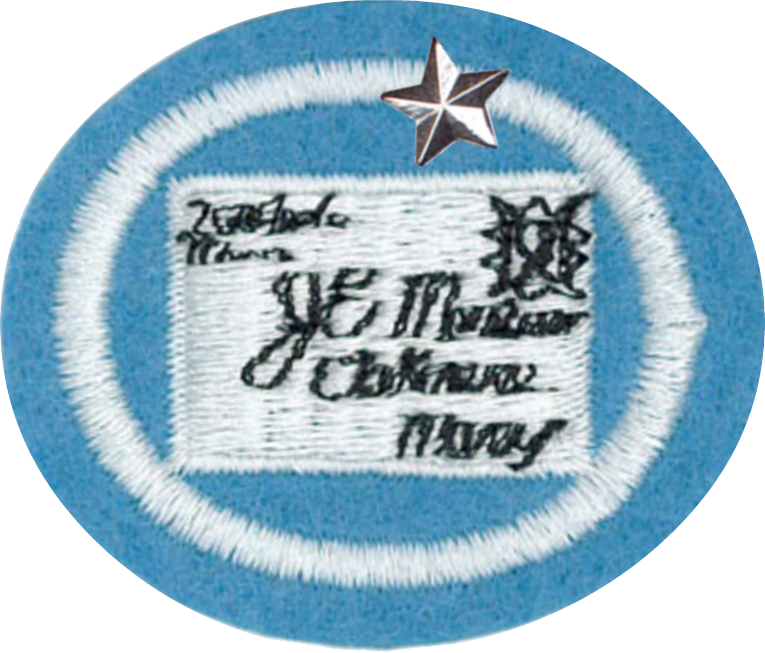Difference between revisions of "AY Honors/Stamps - Advanced/Answer Key/es"
From Pathfinder Wiki
< AY Honors | Stamps - AdvancedAY Honors/Stamps - Advanced/Answer Key/es
(Created page with "<noinclude>") |
(Created page with "</noinclude> <noinclude>") |
||
| Line 13: | Line 13: | ||
<noinclude></noinclude> | <noinclude></noinclude> | ||
{{ansreq|page={{#titleparts:{{PAGENAME}}|2|1}}|num=2a}} | {{ansreq|page={{#titleparts:{{PAGENAME}}|2|1}}|num=2a}} | ||
| − | <noinclude> | + | <noinclude></noinclude> |
| − | </noinclude> | + | <noinclude></noinclude> |
| − | |||
| − | <noinclude | ||
| − | |||
{{CloseReq}} <!-- 2a --> | {{CloseReq}} <!-- 2a --> | ||
{{ansreq|page={{#titleparts:{{PAGENAME}}|2|1}}|num=2b}} | {{ansreq|page={{#titleparts:{{PAGENAME}}|2|1}}|num=2b}} | ||
| − | <noinclude> | + | <noinclude></noinclude> |
| − | </noinclude> | + | <noinclude></noinclude> |
| − | |||
| − | <noinclude | ||
| − | |||
{{CloseReq}} <!-- 2b --> | {{CloseReq}} <!-- 2b --> | ||
{{ansreq|page={{#titleparts:{{PAGENAME}}|2|1}}|num=2c}} | {{ansreq|page={{#titleparts:{{PAGENAME}}|2|1}}|num=2c}} | ||
| − | <noinclude> | + | <noinclude></noinclude> |
| − | </noinclude> | + | <noinclude></noinclude> |
| − | |||
| − | <noinclude | ||
| − | |||
{{CloseReq}} <!-- 2c --> | {{CloseReq}} <!-- 2c --> | ||
{{ansreq|page={{#titleparts:{{PAGENAME}}|2|1}}|num=2d}} | {{ansreq|page={{#titleparts:{{PAGENAME}}|2|1}}|num=2d}} | ||
| − | <noinclude> | + | <noinclude></noinclude> |
| − | </noinclude | + | <noinclude></noinclude> |
| − | |||
| − | |||
| − | |||
| − | <noinclude | ||
| − | |||
{{CloseReq}} <!-- 2d --> | {{CloseReq}} <!-- 2d --> | ||
{{ansreq|page={{#titleparts:{{PAGENAME}}|2|1}}|num=2e}} | {{ansreq|page={{#titleparts:{{PAGENAME}}|2|1}}|num=2e}} | ||
| − | <noinclude> | + | <noinclude></noinclude> |
| − | </noinclude> | + | <noinclude></noinclude> |
| − | |||
| − | <noinclude | ||
| − | |||
{{CloseReq}} <!-- 2e --> | {{CloseReq}} <!-- 2e --> | ||
{{ansreq|page={{#titleparts:{{PAGENAME}}|2|1}}|num=2f}} | {{ansreq|page={{#titleparts:{{PAGENAME}}|2|1}}|num=2f}} | ||
| − | <noinclude> | + | <noinclude></noinclude> |
| − | </noinclude> | + | <noinclude></noinclude> |
| − | |||
| − | <noinclude | ||
| − | |||
{{CloseReq}} <!-- 2f --> | {{CloseReq}} <!-- 2f --> | ||
{{ansreq|page={{#titleparts:{{PAGENAME}}|2|1}}|num=2g}} | {{ansreq|page={{#titleparts:{{PAGENAME}}|2|1}}|num=2g}} | ||
| − | <noinclude> | + | <noinclude></noinclude> |
| − | </noinclude | ||
| − | |||
| − | |||
| − | + | <noinclude></noinclude> | |
| − | |||
| − | <noinclude | ||
| − | |||
{{CloseReq}} <!-- 2g --> | {{CloseReq}} <!-- 2g --> | ||
{{ansreq|page={{#titleparts:{{PAGENAME}}|2|1}}|num=2h}} <!--T:3--> | {{ansreq|page={{#titleparts:{{PAGENAME}}|2|1}}|num=2h}} <!--T:3--> | ||
| − | <noinclude> | + | <noinclude></noinclude> |
| − | </noinclude> | + | <noinclude></noinclude> |
| − | |||
| − | <noinclude | ||
| − | |||
{{CloseReq}} <!-- 2h --> | {{CloseReq}} <!-- 2h --> | ||
{{ansreq|page={{#titleparts:{{PAGENAME}}|2|1}}|num=2i}} | {{ansreq|page={{#titleparts:{{PAGENAME}}|2|1}}|num=2i}} | ||
| − | <noinclude> | + | <noinclude></noinclude> |
| − | </noinclude> | + | <noinclude></noinclude> |
| − | |||
| − | <noinclude | ||
| − | |||
{{CloseReq}} <!-- 2i --> | {{CloseReq}} <!-- 2i --> | ||
{{ansreq|page={{#titleparts:{{PAGENAME}}|2|1}}|num=2j}} | {{ansreq|page={{#titleparts:{{PAGENAME}}|2|1}}|num=2j}} | ||
| − | <noinclude> | + | <noinclude></noinclude> |
| − | </noinclude> | + | <noinclude></noinclude> |
| − | |||
| − | <noinclude | ||
| − | |||
{{CloseReq}} <!-- 2j --> | {{CloseReq}} <!-- 2j --> | ||
{{CloseReq}} <!-- 2 --> | {{CloseReq}} <!-- 2 --> | ||
{{ansreq|page={{#titleparts:{{PAGENAME}}|2|1}}|num=3}} | {{ansreq|page={{#titleparts:{{PAGENAME}}|2|1}}|num=3}} | ||
| − | <noinclude> | + | <noinclude></noinclude> |
| − | </noinclude> | + | <!-- 3. Hacer una exposición de al menos 16 páginas adecuado para un club de sellos, la Feria de Conquistadores, o Feria Juvenil de Filatelia. La exposición debe ser artísticamente organizada, perfectamente etiquetada y montada, mostrando una cuidadosa reflexión e investigación. Caches y cubiertas deben utilizarse también. --> |
| − | <!-- 3. | + | <noinclude></noinclude> |
| − | |||
| − | <noinclude | ||
| − | |||
{{CloseReq}} <!-- 3 --> | {{CloseReq}} <!-- 3 --> | ||
{{ansreq|page={{#titleparts:{{PAGENAME}}|2|1}}|num=4}} | {{ansreq|page={{#titleparts:{{PAGENAME}}|2|1}}|num=4}} | ||
Revision as of 22:24, 10 May 2021
Filatelia - Avanzado
Nivel de destreza
3
Año
1933
Version
11.11.2025
Autoridad de aprobación
Asociación General
1
Tener la especialidad de Filatelia.
Para consejos e instrucciones, véase Filatelia.
2
Conocer el significado de los siguientes términos:
2a
Cancelación
2b
Sellos con letras perforadas
2c
Bloques
2d
Bloques planchados
2e
Bloques planchados
2f
Primer día de emisión
2g
Caches
2h
Hojas conmemorativas
2i
Marcas de agua
2j
Tenazas
3
Hacer una exposición de al menos 16 páginas adecuado para un club de sellos, la Feria de Conquistadores, o Feria Juvenil de Filatelia. La exposición debe ser artísticamente organizada, perfectamente etiquetada y montada, mostrando una cuidadosa reflexión e investigación. Caches y cubiertas deben utilizarse también.
4
Hacer una colección de 750 sellos adicionales con un mínimo de 50 sellos de cinco países extranjeros.
- Collect more stamps in addition to those you collected for the Stamps honor.
5
Nombrar dos catálogos para la identificación de los sellos.
- A stamp catalog (or stamp catalogue) is a catalog of postage stamp types. Although basically just a list of descriptions and prices, in practice the catalog is an essential tool of stamp collecting.
- Originally catalogs were just dealers' price lists, and in some cases, such as Stanley Gibbons, that is still one of their functions. Over time, as philately developed, catalogs tended to accumulate additional supporting details about the stamps, such as dates of issue, color variations, and so forth. As their use by collectors became widespread, the catalogs came to define what was and was not a legitimate stamp, since collectors would avoid stamps not described in their catalog.
- There are only a handful of catalogs with worldwide coverage:
- Michel - The Michel catalog (MICHEL-Briefmarken-Katalog) is the largest and best-known stamp catalog in the German-speaking world. First published in 1910, it has become an important reference work for philately, with information not available in the English-language Scott catalog.
- Minkus
- Stanley Gibbons - is a company based in London, England specialising in the trade of collectible postage stamps and related products who are currently based at 399 Strand, London. The company was established by Edward Stanley Gibbons in 1856 on the basis of his purchase of a sackful of rare triangular stamps from the Cape of Good Hope.
- Scott - The Scott catalogue of postage stamps put out by Scott Publishing Co, a subsidiary of Amos Press, is updated annually and lists all the stamps of the entire world which its editors recognize as issued for postal purposes.
6
Usando un catálogo de sellos, identificar y montar de acuerdo con el número de catálogo y el país.
- Identify and mount your collected stamps.
7
Montar sus sellos con bisagras de papel engomado o monturas de plástico. Monturas de plástico se prefiere para la acuñación de sellos.
- Mount your stamps


